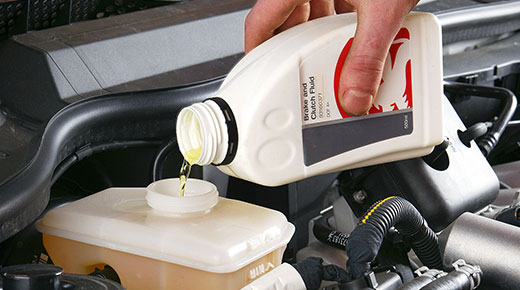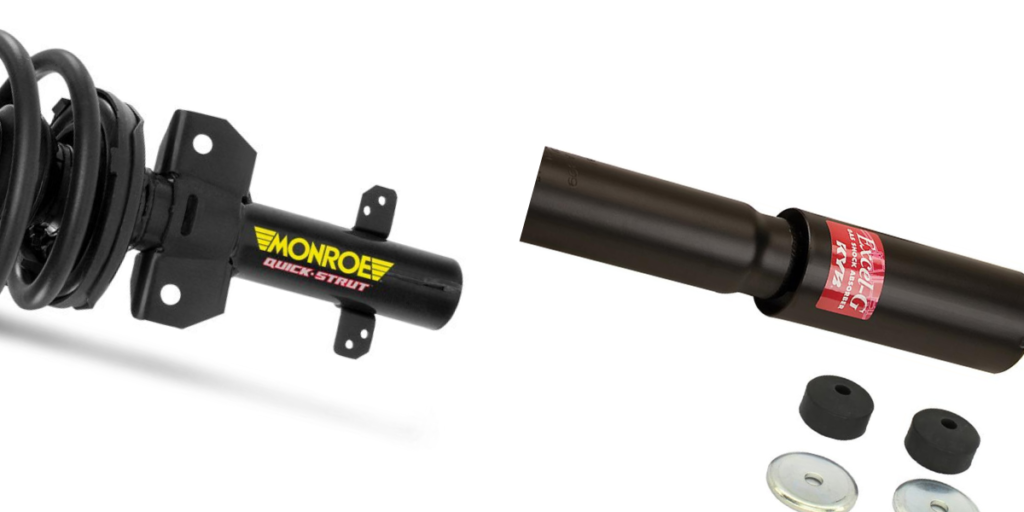Brake fluid provides hydraulic pressure to trigger your vehicle’s brake system’s piston and help brake. Unfortunately, the important process of changing the brake fluid is not something well-known by most car owners.
Checking and changing your brake fluid is something you should know. The risk of not checking your brake fluid often or knowing when to change it can be very dangerous. Unfortunately, these risks are often not discussed.
This article aims to tell you how to minimize these risks, recognize your car’s needs, and know when to change or replace the brake fluid.
How Does Brake Fluid Work?
The brake fluid and the braking system have to work at optimal pressure and temperatures. Elements like high-stress and high-friction help in making sure the system doesn’t malfunction. Make sure you do routine checks and know when you need to replace them.
Brake fluid plays a major role in maintaining the hydraulic pressure that is integral in stopping the vehicle. This fluid works in an environment that is highly pressured and hot. It typically works in 100 to 200 degrees.
When braking in a steep downhill, the temperature gets closer to 550 degrees. Consequently, brake fluid is incompressible and has a high crisis point and turns into gas at the boiling point.
Gas compresses unlike liquids, and if there are air bubbles in the braking system, the brake can act up or fail. However, the braking fluid is hygroscopic and absorbs water from the surrounding atmosphere.
How Does the Braking Fluid Affect the Brakes?
If the water in the brake fluid is lower than the necessary temperatures, the system can disintegrate braking system. Each vehicle has a unique brake, and for any vehicle to work smoothly, all four brakes must work efficiently together.
The front brakes perform an essential function and are more important than the rear brakes. Therefore, the brake discs are at the front, and the less effective brake drums are in the back. Consider investing in a good brand of brake pad sets; one of the most well-known is Akebono. To get better perspective, check out this Akebono and Performance review.
As soon as you apply the brake, the piston depresses. The piston then pushes out of the cylinder by the brake fluid. Then, the brakes stop the car. You should note that not every component of the braking system needs braking fluid.
Braking fluid is specific to the hydraulics in every car. The other important fact is that a hydraulic system is a combination of useless components without braking fluid. The car cannot stop if there is no pressure in the hydraulics.
When to Perform a Brake Fluid Change?
The best time to change the brake fluid is during your car’s regular service and when you open the brake lines and check or if the brakes feel iffy. The perfect color of the braking fluid is yellowish and translucent. If the color of the braking fluid has contamination, change it.
Changing the brake fluid can also prevent brake fade from occurring due to contamination. However, please don’t open the fluid container too often as moisture and air can get into the system and contaminate it.
The fluid reservoir has clear level markings – MIN and MAX – that you can check without opening the cap. If the levels are low, fill it up from an unopened container. Filling up brake fluid from an opened container can introduce moisture into it, making it ineffective.
About Brake Fluid Types
Just like everything else about your car, certain types of brake fluids suit your car. The different types of braking fluid are DOT 3, 4, 5, and 5.1. The distinctions in the various kinds of fluids are the fluid’s viscosity and boiling points.
Braking generates extreme heat, and the fluid the car used needs to withstand high heat levels. Boiling points are also important because air bubbles can get into the system if the fluid boils. That can cause the brake system to fail and harm you and the vehicle.
If the manufacturer has recommended certain brake fluid, use that; otherwise, do your research and pick the most appropriate one. Know that brake fluids aren’t switchable, so you have to use the right one. DOT 5 is silicone-based, while the others are glycol-based.
Asking the people at the car service office will give you an idea of what your car needs.
How to Put in Brake Fluid
- You can change brake fluid using a baster to get the contaminated liquid out. Then, empty the baster into a recyclable container.
- Fill the container with fresh brake fluid and drive it around regularly to mix the fluid properly.
- Repeat this numerous times over the next couple of weeks until the liquid in the reservoir maintains its clear hue.
- Remember to use different basters for brake and change the steering fluids regularly.
- The brake fluid is very intense and might damage the baster’s rubbery tip, removing the fluid in installments.
Choosing the Appropriate Brake Fluid
Since brake fluids aren’t swappable, it is important that you use the right ones and not damage your car by using the wrong kind. In addition, each braking fluid is different and has varied components.
When looking for a replacement, you have to find one suitable for your vehicle’s braking systems. The manufacturers of the vehicles normally have recommendations as the designs are very specific and can suit a particular type of fluid. Mixing different kinds of fluids causes harm.
Types of Brake Fluid
The different kinds of braking fluids are DOT 3, 4, 5, and 5.1. The DOT 3, 4, and 5.1 tend to absorb a lot of moisture instead of 5, which does not.
If your vehicle has a braking system that requires some moisture, pick a hygroscopic or glycol-based fluid. Otherwise, pick silicone-based fluids.
A good braking fluid should have a high boiling point, high viscosity, low Hygroscopic, be non-corrosive, and incompressible. Change your braking fluid every year or two. If you feel like your brake is getting faulty before then, get professional advice.
Key Takeaway
When it comes to buying brake fluids, it is best to follow the manufacturer’s recommendation. However, an important note to keep in mind is that the fluid you pick must be compatible with your vehicle even if it doesn’t meet DOT requirements.
Finally, mixing different braking fluids is not advisable. If you’re unsure about what to do, contact professionals to guide you. Also, make sure to go for only the top brake rotor brands for top performance.





